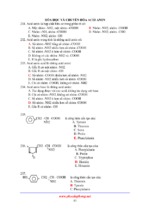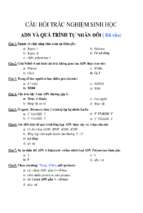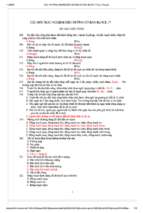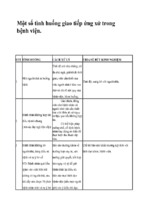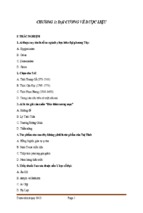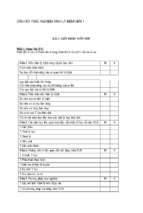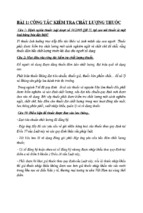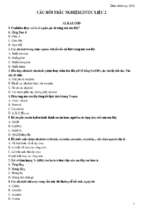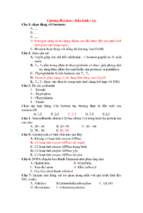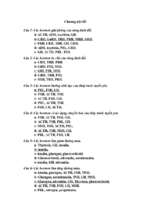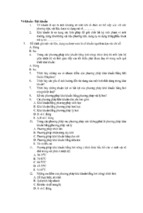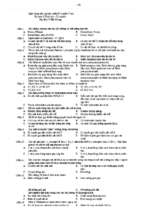Civilization, diet and diabetes
Many diseases in western societies are known or believed to be due
to diet and lifestyle factors. The Australian continent offers a unique opportunity for
studying these factors. The autochthonous population, the Aborigines, came to Australia
from Asia some 60,000 years ago. Until the European occupation of Australia, just over
200 years ago, the Aborigines, led a nomadic existence, hunting for their food
or gatheringfood as they moved from one place to another. This was called the huntergatherer lifestyle. Although the vast majority of Aborigines are now westernized, some
have retained their ancestral ability to live and survive successfully as hunter-gatherers.
Professor Kerin O’Dea, head of the Department of Human Nutrition at Deakin University in
Victoria, Australia, has worked closely with the Aborigines to study diabetes, which is
extremely prevalent in this population.
The prevalence is between 5% and about 25% among adults and that’s an extraordinarily
high prevalence of diabetes if we take account that in most European or westernized
countries of European origin it’s about 3%–3 to 4%.
So this very high rate of diabetes has just become evident in Australian Aborigines since
they westernized. There is no evidence at all that they had diabetes when they were living
as hunter-gatherers. And theyshare this vulnerability to diabetes with many other
populations which have been similarly exposed to a rapid westernization in the 20th
century.
The prevalence of diabetes is extraordinarily high in Aborigines since they
westernized
And the type of diabetes that they get is non insulin-dependent diabetes. So it’s the form of
diabetes which is most common among whites and it’s also the form which has a strong
genetic component but which requires environmental trigger factors to precipitate it in
susceptible individuals. So it’s an interaction of genetic predisposition and lifestyle trigger
factors.
The high prevalence of diabetes among Aborigines is related to a high prevalence of
obesity. This is believed to be due to a special type of metabolism that evolved through
natural selection and which is adapted to a special pattern of food intake.
As hunters-gatherers, they lived a nomadic existence. They were extremely
physically fit and lean, and they had what we now describe as a feast and famine pattern
of food intake. There were times when they hadplenty of food available and other times
when there wasn’t very much. And so it was terribly important in the times of plenty, to be
able to eat large amounts and deposit, store that energy efficiently as fat, so that it could
then be used to supplement the less than adequate food supply in the times of so-called
famine or food scarcity. And so this has been described as a thrifty genotype,
a thrifty metabolism and it would have favored survival of nomadic hunter-gatherers in
their traditional environment. The people who didn’t have this type of metabolism would
not have survived severe famines, and so it would have been actively selected for until very
recently. And now, with westernization everything changes. The lifestyle itself has
obviously changed in very profound ways. Where Aborigines were very physically active,
getting their food every day, they now lead sedentary lives.
The diet has changed in every way imaginable. Their traditional diet, which we can talk
about a little later in some detail, was a low fat, high fibre diet. And the food, the diet they
eat now is a poor man’s diet in Australia, because Aborigines tend to be very poor in this
country. And so they eat a lot of refined sugar, refined flour, fatty meat, cheap cuts of
fatty meat. And so they have a high fat, low fibre diet. They also have a high salt intake,
which they never used to have. They didn’t add salt to their food traditionally.
And they now develop obesity, which we think is the result of the combination of an
efficient metabolism, used to storing excess calories efficiently as fat, combined with too
much food, a completely different kind of diet and less energy expenditure. So they
develop obesity. And once obesity is common in a community, non-insulin dependent
diabetes becomes common.
Obesity is believed to promote diabetes through insulin resistance.
Obesity is a risk factor for diabetes when combined with a positive family history.
The type of obesity that Aborigines get, is android obesity, so it’s a central distribution of
fat. And that type of obesity has been shown to be very much more associated with
complications and primarily, we believe now, mediated through insulin resistance. And the
proposed mechanism is that when you’re resistant to the action of insulin, it’s a selective
insulin resistance, you’re resistant only to those actions of insulin that affect glucose
regulation. So cells like muscle cells, adipose tissue cells don’t take glucose up as effectively
as they would have with normal insulin sensitivity. However, those processes involved with
fat deposition, at least in the early stages, are acting normally, or near normal levels.
The fatter you get, the worse the insulin resistance gets
So during those times, you’re actually channelling excess energy into fat in a more
efficient way than you would, had you had normal insulin sensitivity. So it’s an irony in a
way that the situation gets worse and worse.
The fatter you get, the worse the insulin resistance gets. And so the only way to break the
cycle is to reduce insulin resistance. And that now is the basis of the treatment.
We’re very interested in pursuing the lifestyle change option in approaching diabetes
because we’re not convinced that the conventional approaches are having any impact on
the problem.
Conventional approaches meaning using insulin therapy or oral hypoglycemic agents.
Because of the unique situation of some Aborigines, Professor O’Dea has been able
to conduct an unusual study to look at the influence of diet and lifestyle factors on sugar
and lipid metabolism.
People in the North of Australia and in remote areas all over Australia in fact, who still
retain the knowledge and ability to live and survive successfully as hunter-gatherers.
Now this means they were either born in the bush, and were taught the methods of
survival by their parents, or their parents were born in the bush and lived many years as
hunter-gatherers and taught the children, even though they were now in settlements.
And so what we’ve been able to do is go back to the hunter-gatherer lifestyle temporarily,
with groups of Aborigines in North-Western Australia. And in every case when we’ve done
this, we’ve shown really very rapid and dramatic improvement in carbohydrate and lipid
metabolism. And the most striking findings were in a study we did with a group of
diabetics. And for 7 weeks they lived off the land and we were eating lots of red meat for
example, but it was very lean red meat, kangaroo, lots of fish, fresh-water fish and
vegetable foods like yams, which are like a wild potato, and a wide variety of foods,
although it was kangaroo, fish and yams that provided the bulk of the food that was eaten.
We’re not convinced that the conventional approach is having any impact on the
problem
Over that time, these people lost about a kilogram every week, each week, so over a 7-week
period
they lost 7 to 8 Kg on average. They were very overweight to begin and they were still
overweight at the end. However the improvement was extraordinary. Their fasting blood
glucose, for example, went from a mean of 11.5 mmol/l to 6.3 mmol/l in that period. Their
insulin response which, typical of diabetics, was impaired, was improved over that period.
Their insulin sensitivity, which we looked at indirectly by looking at the ratio of glucose
and insulin in the fasting state, improved. Their lipid levels went completely back to
normal. They have very high triglycerides that’s one of the markers of insulin resistance.
And their triglycerides went from 4, over 4 mmol/l back to about 1 mmol/l. Their
cholesterol, even though they were having a high cholesterol intake, with a lot of meat in
the diet and offal, fell, but although it wasn’t very high to begin with.
And then another very interesting result that we had, two other interesting results, were
that their blood pressure fell and their bleeding time increased. Now bleeding time is an
indirect measure of thrombosis tendency - the longer the bleeding time, the lower the
tendency to thrombosis. So in fact, everything that we looked at that was related to
cardiovascular disease risk, or diabetes, was improved.
A temporary change in lifestyle has produced dramatic improvement
There were 3 factors that we think were responsible for this. There was weight loss, and
that’s been demonstrated in many other studies independently to be a terribly important
factor. There was increased physical activity, because the effort involved in getting your
food each day you really do have to expend a lot of energy. You’ve got to walk long
distances, dig, that type of thing; and the type of diet. The diet itself was very low in fat,
even though it contained a lot of animal foods - wild animal foods are very low in fat - and
it was high in fibre. All of the vegetable foods that we ate contained slowly digested
carbohydrate and they’re very fibre rich. So those three characteristics - weight loss,
exercise and diet - all contributed. We weren’t able to differentiate between them
but they’re part and parcel of the hunter-gatherer lifestyle.
Of course, most diabetics in industrialized countries do not lead a hunter-gatherer lifestyle,
so English Audio Reviews asked Professor O’Dea what were the implications of her studies
for the treatment of diabetes in western societies.
I think the implications are very profound because the type of diabetes is the same, there’s
no difference. We know that in our own society, non insulin-dependent diabetes is a disease
of affluence, a disease of western societies. So similarly to the Aborigines, although there
are fewer, proportionately fewer Europeans have that susceptibility, but the trigger factors
are the same. And so I think that the implications are the same.
I think the implications are very profound for our society
And my view is that the most important aspect is weight loss. Most non insulin-dependent
diabetics are overweight. And even if they are only moderately overweight, weight loss can
have a really very profound effect on their metabolic control. And the way to achieve
weight loss really is through diet and exercise. Now, it’s not easy, it’s simple, it’s a fairly
simple solution but it isn’t easy. And I think what we need to do is to devise strategies for
people with a diabetic family history to be made aware of the risk that they’re at, and to be
very conscious of their lifestyle and the aspects of their lifestyle that could trigger diabetes
and to actually take preventive measures before it occurs. When you simply change to a
high fibre, low fat diet and maintain the weight, you’ll get an improvement in metabolic
control. Clearly that improvement isenhanced if you also exercise and also lose weight. So
I think that the message is exactly the same. It was a very striking demonstration for the
Aborigines. However if we dissect the different components of it which are important, we
can apply them all individually and in combination in our own society.
- Xem thêm -




